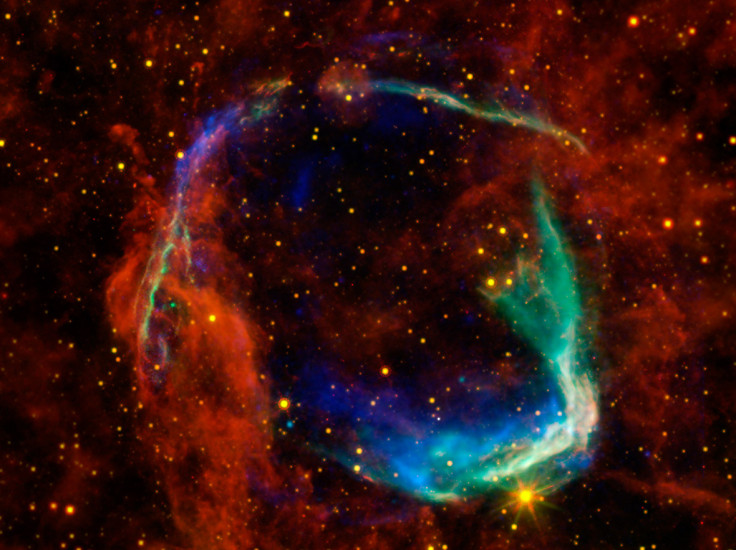Space: Early Stages of Stellar Explosion Caught for the First Time by Optical Telescopes Array

Astronomers watching the thermonuclear explosion from a nova that occurred 15,000 years ago have processed high resolution images of the event right from the beginning to show that it is more complicated than predicted by models.
Using an array of optical telescopes, astronomers at Georgia State University's Center for High Angular Resolution Astronomy (CHARA) observed the expanding thermonuclear fireball last year in the constellation Delphinus with unprecedented clarity, says a university press release.
The first measurement obtained is the earliest obtained so far for a nova event.
The observations over the next few days revealed the fireball had a slightly elliptical shape, giving clues on how material is ejected from the surface of the white dwarf during the explosion.
The CHARA observations also showed the outer layers became more diffuse and transparent as the fireball expanded. After about 30 days the researchers saw a brightening in the cooler, outer layers, possibly caused by formation of dust grains that emit light at infrared wavelengths.
The results of these observations, carried out by 37 researchers from 17 institutions and led by Georgia State astronomer Gail Schaefer, are published in Nature.
What began as a discovery of a 'new star' turned out to be the nova following the explosion of hydrogen gas accumulated on the surface of a white dwarf, a star with the diameter of the earth and mass of the sun.
The hydrogen usually supplied by a companion star builds up till it is ignited by the pressure generated by the star's gravity on the gas layer. The thermonuclear fusion that follows is like a stellar hydrogen bomb.
The light from the explosion exceeds the star's normal brightness and can be visible as a 'new star' in a region where it was not visible earlier. That was what had led an amateur astronomer to 'discover' the star named Nova Delphinus, 14,800 light years away.
Over the following weeks, the star slowly fades as the fireball expands, cools and dissipates. The astronomers measured the size of the 'new star' across 27 nights following the explosion.
Ultrafast expansion
From a size of the earth's orbit, the fireball expanded 20 times at a velocity of more than 600 kilometres per second to grow to the size of Neptune's orbit in 43 days.
By measuring the expansion the astronomers were able to say that it was at a distance of 14,800 light years from the sun.
This means that, while the explosion was witnessed here on Earth last August, it actually took place nearly 15,000 years ago.
Much of what is seen of the distant sky is actually what has happened many years ago. This is what Carl Sagan meant when he spoke of watching history live as we look at the skies.
The CHARA Array in the San Gabriel mountains of southern California combines light from six telescopes to create high resolution images with a clarity of resolving a nickel placed on the Eiffel Tower from as far away as Los Angeles!
© Copyright IBTimes 2025. All rights reserved.





















